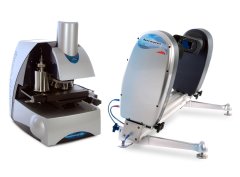New work from Malvern Panalytical illustrates how the complementary particle characterization techniques of laser diffraction (Spraytec) and automated image analysis (Morphologi G3) can accelerate nasal spray testing. Both methods are time-efficient, providing detailed insight for formulation development and supporting streamlined analysis for QC.

FDA guidance covering bioavailability/bioequivalence studies for locally acting nasal sprays specifies that critical parameters, such as active drug particle size and droplet size, are measured to assess performance. Automated image analysis can reduce the time taken to measure drug particle size, from two hours with manual microscopy to just 20 minutes. Laser diffraction, which has a data acquisition rate of 2500 measurements per second, is able to track the evolution of formulation droplet size during a spray event, providing researchers with the results required to optimise the process of drug delivery to the nasal mucosa.
In the study, an existing manual microscopy method was transformed into a standard operating procedure for the Morphologi G3, Malvern Panalytical’s fully automated particle characterization system that uses image analysis technology. Size and shape data were rapidly captured for a considerably greater number of active drug particles compared to the existing manual method, giving the data greater statistical relevance. Powerful classification software defined the particle populations of interest and eliminated data for active-excipient agglomerates. Automating the entire analytical process not only accelerates measurement, it also removes any operator bias.
Using the Spraytec laser diffraction system, the evolution of droplet size can be tracked in real time during the actuation of a nasal spray pump. This capability was used to quantify the impact of solution viscosity on the size of droplets produced during aerosolization. The results show that more viscous solutions produce a larger droplet size. Spraytec is suitable for the in situ measurement of suspension or solution droplets in the size range 0.1 to 2000 microns, making it ideal for the analysis of nasal sprays and orally inhaled products.